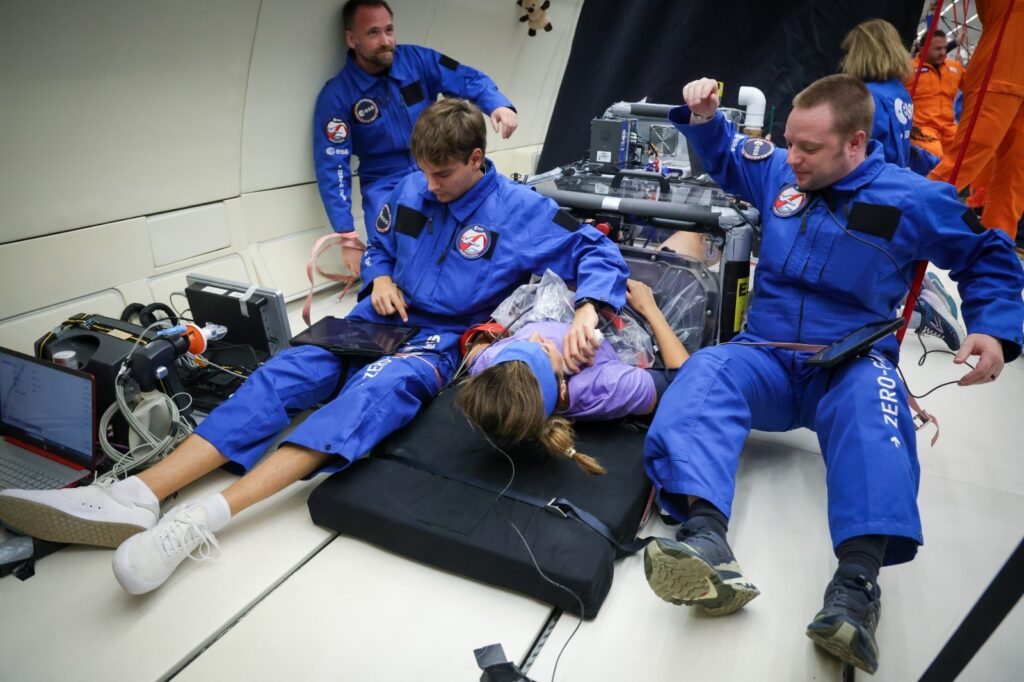This experiment aims to better understand how the human body responds to graded Lower Body Negative Pressure (LBNP) under true microgravity conditions, provided by parabolic flight. LBNP is a promising countermeasure for the fluid shifts that occur in space, but most studies to date have been conducted on Earth using analogs such as supine or head-down tilt positions. While these approaches remove vertical hydrostatic gradients, they cannot fully replicate the absence of gravitational forces along the front-to-back human axis, which may influence venous return, tissue pressures, and overall cardiovascular regulation.

To address this limitation, our team will investigate cardiovascular, autonomic, and ocular responses to different levels of LBNP during short-duration microgravity phases in parabolic flight. By generating dose-response curves across multiple physiological systems, we aim to directly compare responses in true microgravity with those obtained under 1g analog conditions. The study will also assess sex-based differences in physiological adaptation, contributing to a more inclusive understanding of individual variability in countermeasure effectiveness and fluid regulation during spaceflight.
This project will deliver the most comprehensive and systematic dataset on LBNP responses ever collected in true microgravity. The results will inform the optimization of LBNP as a spaceflight health countermeasure, with direct applications for reducing risks such as Spaceflight-Associated Neuro-ocular Syndrome (SANS) and venous thromboembolism (VTE). Ultimately, the findings will help define the gravitational thresholds needed to maintain cardiovascular and ocular health duringlong-duration missions to the Moon and Mars.
